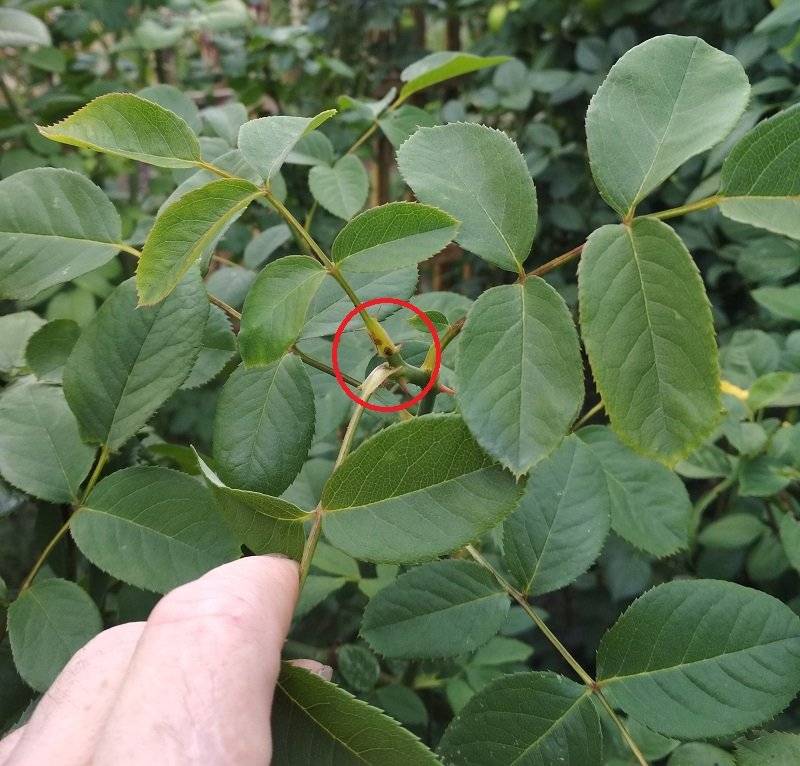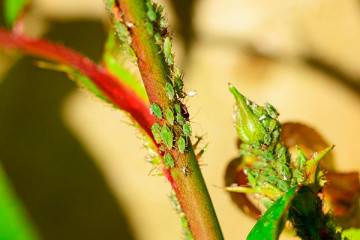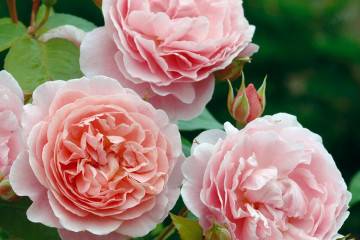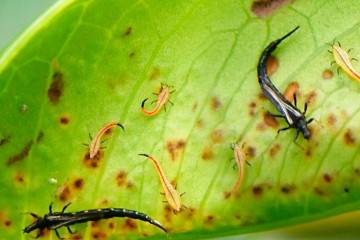Blind shoots on roses - what to do, what they look like
Content:
A healthy and abundantly blooming rose is a real decoration for any garden. However, in order to achieve this result, gardeners need to properly carry out care measures. And pruning is one of the important parts of it. Timely removal of blind shoots on roses contributes to the appearance of beautiful buds with their exquisite aroma.
Blind shoots on roses - what is it and how it looks
Blind, they are dormant, the shoots by external signs are no different from healthy full-fledged shoots. The difference is noticeable on closer inspection, since they are characterized by blinded tops that do not have the opportunity for further development. The upper part of a healthy shoot has a young growth or bud.
Such branches can be identified by the absence of a continuation. If you look closely, you can see that the growing point will be blinded. In other words, she simply died. There are several reasons why this is happening. It can be spring frosts, lack of some trace elements, and much more.
What causes blind shoots
The appearance of blind shoots on rose bushes can occur for several reasons, including:
- weather features. The upper buds can freeze as a result of spring frosts;
- damage to the roots. This occurs as a result of improper digging and planting of the bush, as well as due to some pests and diseases;
- lack of nutrients. The successful development of roses requires correct and regular fertilization.
Picture 2. The reason for the lack of flowers may lie in blind and fattening branches
As practice shows, dormant shoots are especially relevant in young shrubs, as well as those that are not pruned. If the bush has all the shoots like this, this becomes especially noticeable during flowering. Against the background of the rest of the flowering shrubs, it will be covered only with greenery.
Often, a delay in flowering and, accordingly, the appearance of buds may be due to a lack of certain minerals. Therefore, flower growers should not neglect feeding when growing rose bushes. Nevertheless, it is worth regularly examining the plants for the presence of blind twigs.
Another reason why a rose has long, blind shoots lies in the lack of pruning or its gentle execution. This is especially typical for inexperienced flower growers who, at the beginning of their activity, try to preserve every twig and leaf to their flowers and after flowering cut off only the peduncle.
Correct summer pruning should be carried out with the removal of 2-3 lower pairs of leaves, and preferably with 4-5. In this way, good development of shoots and the emergence of new buds can be achieved.
How to properly prune blind shoots
The buds are laid during the period of active growth. At this time, all the shoots of the bush grow stronger and thicker.If thin and poorly developed branches grow against their background, this may mean the development of dormant shoots.
You can correct the situation and stimulate the growth of the bush with the help of pruning. The upper part of all blind shoots on 1-2 leaves is subject to removal. Foliar top dressing is recommended immediately after pruning is completed. For this, complex fertilizers or rotted cow dung are suitable. After a time after these procedures, young shoots should appear on the shoots. However, they will retain the ability to form buds.
If there are blind shoots on the roses, what to do is to take a closer look at the bush. If they were seen at the end of summer, then it is not recommended to wake up the buds with pruning and growth stimulants. Young twigs, which begin to actively grow, will not be able to grow strong enough before the coming winter, which will lead to their death. The event should be rescheduled for spring.
Since the last summer month, phosphorus-potassium formulations can be used as top dressing. Their action is aimed at strengthening the tissues, which will allow the roses to survive the coming winter.
Pruning features:
- spring pruning is done after the cover has been removed and before the buds swell. Frozen and deformed branches are subject to removal during this period;
- in summer, the aim of pruning is to regulate the flowering process. At this time, shoots with a flower stalk 3-4 buds long are removed. Such an event will speed up the process of the appearance of new buds;
- an autumn pruning procedure is carried out to prepare shrubs for winter. At this time, poorly ripened blind and fatty branches, as well as long shoots, should be cut off. The shrub is shortened based on the method of winter shelter.
Fatty shoots of roses
Fatty branches are most often found in plants that bloom again. They are characterized by a fast growth rate, good development, but no buds. As a result, the excess content of nutrients leads to the fact that part of the plant begins to fatten.
If such a situation arises and fattening flowering branches of roses were found, what every gardener should know to do. You can cope with this procedure using pruning. For this, overfed shoots are selected and cut to 1/3 part.
Caring for roses after removing blind and fattening shoots
After pruning, it is necessary to fertilize the bush, and also take into account some other nuances:
- perform regular soil moistening. The frequency will depend on the type of soil and weather conditions. In general, the heavier the earth, the less often it needs to be moistened;
- weed by removing weeds;
- mulch bushes. Usually, for this procedure, freshly cut grass or straw is used, which is laid out around the bush with a thickness of 5-7 cm. At the same time, a free space with a diameter of about 10 cm should be made near the trunk;
- spraying. By treating plants with folk remedies or ready-made fungicides and insecticides, you can prevent the development of many diseases and the appearance of insect pests.
Caring for roses is a rather laborious and responsible process. However, even beginners, if desired, are able to study and understand all its subtleties. Regular pruning, sub-crusting and other activities can provide roses with abundant flowering.


















